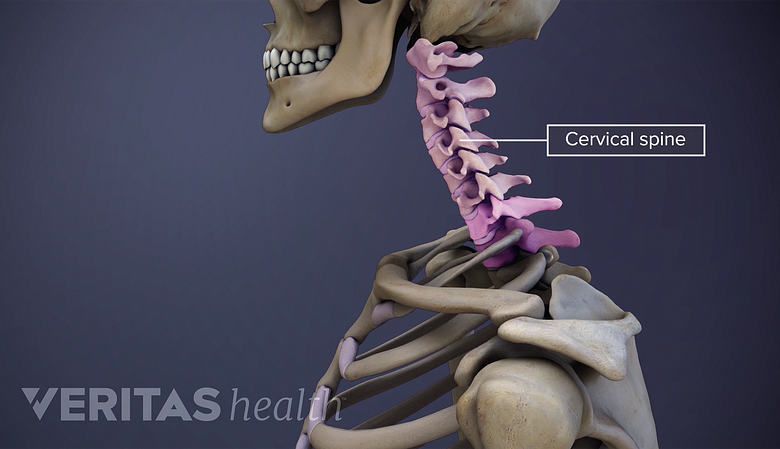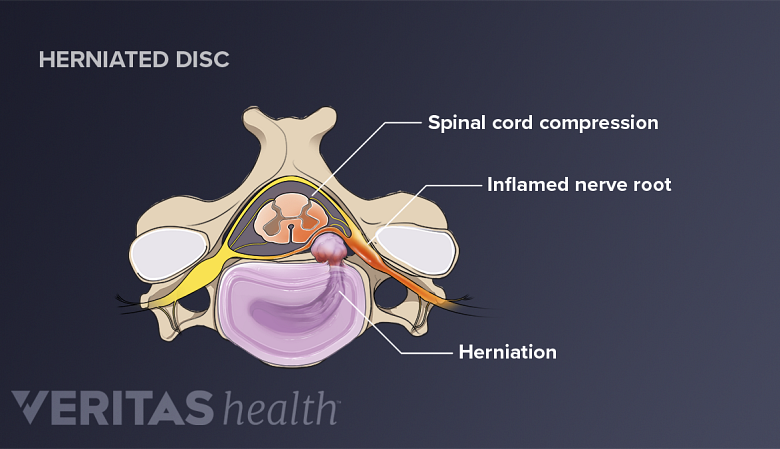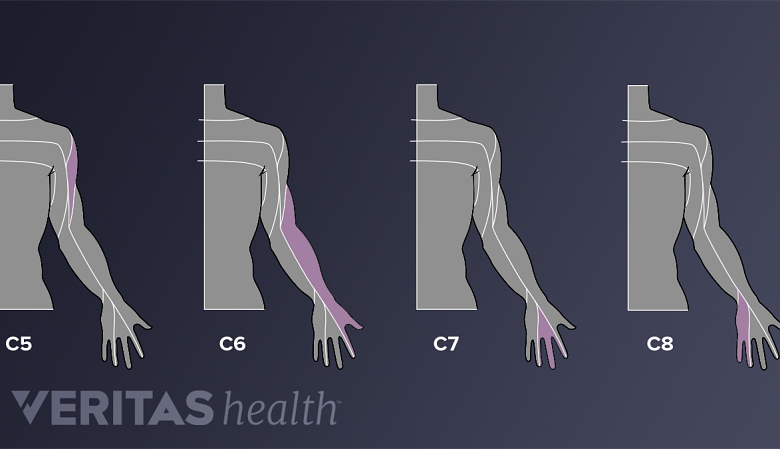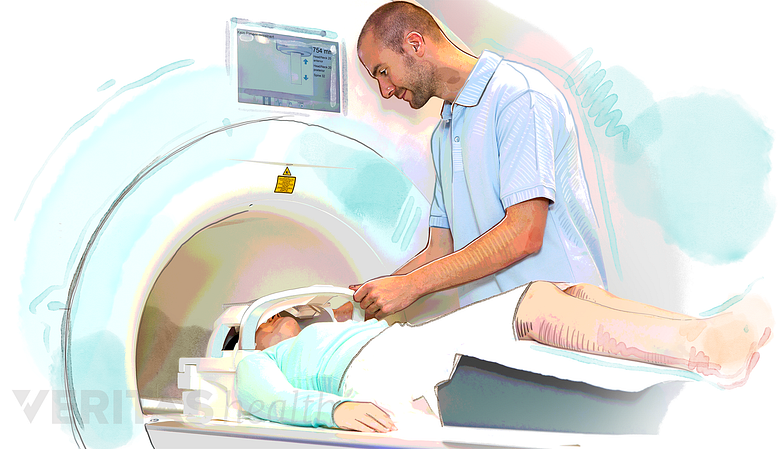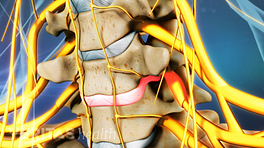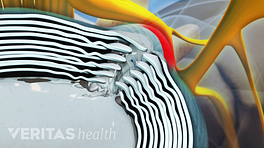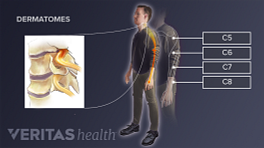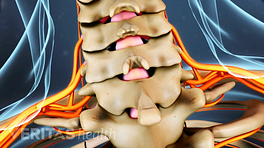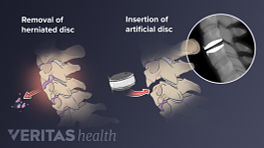When a spinal disc becomes herniated in the neck, it can leak out into the spinal canal or nerve root tunnel and impinge on the exiting nerve root. This process can cause cervical radiculopathy with symptoms of pain, tingling, numbness, and/or weakness that can radiate down into the shoulder, arm, and/or hand.
In This Article:
- Cervical Radiculopathy from a Herniated Cervical Disc
- Cervical Radiculopathy from a Herniated Disc Treatment Options
- Surgical Options for Cervical Radiculopathy from a Herniated Cervical Disc
- Cervical Radiculopathy Interactive Video
2 Reasons Why Cervical Herniated Discs are Not Common
Discs in the neck are less bulky and subject to lesser stress than the low back.
Developing a cervical herniated disc is less common than a lumbar herniated disc for two reasons:
- There is far less disc material in the cervical spine
- There is substantially less force across the cervical spine
Herniated discs in the neck are most likely to occur in people ages 30 to 50.
The Course of Herniated Disc Pain
Cervical radiculopathy symptoms are caused by irritation or compression of the cervical nerve roots.
A herniated disc in the neck can cause severe pain and symptoms that disrupt a person’s quality of life. However, most symptomatic herniated discs end up resolving on their own. Some studies indicate that cervical radiculopathy from a herniated disc can to start feeling better within 4 to 6 weeks, although some symptoms may last up to 6 months, and more than 80% of cases are symptom-free within 2 to 3 years. 1 Wong JJ, Côté P, Quesnele JJ, Stern PJ, Mior SA. The course and prognostic factors of symptomatic cervical disc herniation with radiculopathy: a systematic review of the literature. Spine J. 2014; 14(8):1781-9.
See Cervical Radiculopathy Symptoms
Cervical radiculopathy resulting from a herniated disc is typically treated non-surgically until the symptoms finally subside and possibly go away completely. Rarely is surgery a consideration unless there are progressively worsening symptoms, or symptoms fail to resolve.
See Cervical Radiculopathy Treatment
Cervical Radiculopathy Symptoms from a Herniated Disc
The areas of pain distribution vary depending on the nerve root that is compressed.
When cervical radiculopathy is caused by a herniated disc, the pain can be even worse than when it is caused by a cervical osteophytes (bone spur) or bony overgrowth. This is because when a disc herniates, its inner layer (nucleus pulposus) contains inflammatory proteins that can leak all the way onto the sensitive nerve root. The chemical reaction that is created when these proteins flow onto the nerve root can cause both pain and damage.
Symptoms of cervical radiculopathy can radiate anywhere from the neck down to the fingers and may include any number of the following:
- Shock-like or burning pain
- Pins-and-needles tingling
- Numbness, which may or may not include tingling
- Weakness, which could affect shoulder, arm, and/or hand strength
See Understanding Hand Pain and Numbness
The location of cervical radiculopathy symptoms will depend on which cervical disc is herniated and which nerve root is being impinged. For example, a C6 radiculopathy can send symptoms all the way down into the thumb and index finger, whereas a C8 radiculopathy can send them to the pinky.
Cervical radiculopathy pain from a herniated disc is often most severe when the inflammatory disc material first leaks onto and compresses the nerve root. Over time, symptoms are likely to subside because fewer inflammatory proteins are released from the herniated disc as it dries out.
Diagnosing Cervical Radiculopathy from a Herniated Disc
An MRI scan is a useful diagnostic tool to diagnose cervical herniated disc.
Cervical radiculopathy from a herniated disc can typically be diagnosed after taking the patient’s detailed medical history and performing a physical exam. The doctor may perform one or more provocative diagnostic tests during the physical exam, such as Spurling’s test, to help confirm a cervical radiculopathy diagnosis. This test usually involves having the patient bend or twist the head toward the painful side and seeing if gently applying additional pressure can recreate or temporarily provoke the symptoms.
See Diagnosing Cervical Radiculopathy
If more information is needed to confirm the diagnosis, advanced diagnostics may be requested. Most commonly this would include an MRI scan, which uses a strong magnet to image the cervical spine and show whether a disc has herniated onto a nerve root. If a patient is unable to have an MRI due to metal already being in the body, such as from a metal splinter or sometimes even a previous fusion surgery, another option for imaging the cervical spine could be CT scan with myelogram (dye injected into the spine for viewing soft tissues).
- 1 Wong JJ, Côté P, Quesnele JJ, Stern PJ, Mior SA. The course and prognostic factors of symptomatic cervical disc herniation with radiculopathy: a systematic review of the literature. Spine J. 2014; 14(8):1781-9.

